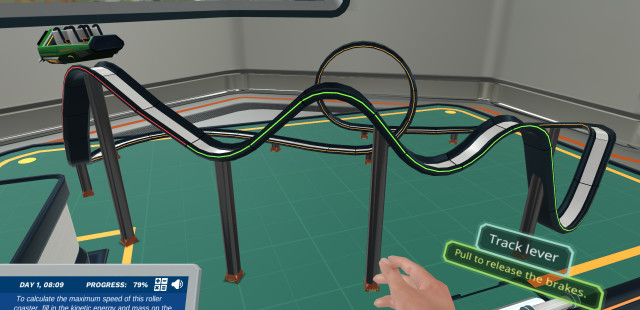Simulations
Simulations
How it Works
How it Works
Pricing
Resources
Resources
Labsterresources
Check out all the Labster resources that can accelerate your teaching.
BlogEventsCase StudiesWebinarsPodcast
NewsGuidesResearch3D Assets
Ubisim
New
Contact Us
Get Started
Course Package
Try for Free
Get pricing
About Virtual Labs for High School Physics
Learn about matter and its motion and behavior through space and time in our physics lab simulations for high school courses. Study the most fundamental measurable quantities in the universe and find relationships between them to explain and predict their behavior. You can also view our curriculum alignment guide for NGSS, AP, and IB curriculum standards.
299
results found
Thank you! Your submission has been received!
Oops! Something went wrong while submitting the form.
Levels
Levels
Looks like there’s nothing here...
We couldn't find anything related to your search query. Check your search for any spelling errors or try a different search term.

Show more
Why Labster?
Labster’s immersive virtual labs are proven to engage students in science, reduce dropout rates, decrease overhead, and improve learning outcomes.
Labster helps teachers increase their students’ knowledge and test scores.
Research shows that low-knowledge students improve the most after using Labster, with a 24% increase in their test scores.
Source: BMC Study
80% of students said Labster made them more likely to continue enrolling in STEM classes.
Over 50% of first-year STEM students in the United States either change their majors or fail to earn their degree.
Source: LXD Study
90% of students agreed that Labster provided opportunities for additional lab practice.
Undergraduate students typically require more time to complete lab experiments than provided.
Source: LXD Study

"Labster is cost effective, it’s easy to use, and you have a better outcome. It’s great when your students tell their friends, ‘hey, you should take this course.”
Cord Carter, Chemistry Lecturer
Fisk University, TN
Read case study
“I don’t think there’s anyone who has the same expertise in-house that Labster has. I haven’t seen anyone else working in the field have this level.”
Dr. Philippos Savvides
Arizona State University
Read case study
“Labster allows a dynamic visualization of chemical reactions so that students can practice and better understand these concepts.”
Dr. Sabine Matallana-Surget
Stirling University
Read case study
“The virtual labs really help the students become familiar with the material before they engage in the class.”
Dr. Paul Kasili
Bunker Hill Community College
Read case study
"I think all of the teachers are stretched thin, but the nice thing is that having something that's engaging for the students gives teachers that opportunity to breathe and get excited again. Because they're seeing the kids light up, they're seeing the kids engage with content."
Melody McGill
Curriculum Coordinator, Modesto School District, California
Read case study
“My kids like to play around, they like to do simulations, and they’re very visual learners. They’re all into video games so if you can bring the aspect of a video game into your class and teach your content that way, you’ve got 'em hooked.”
Shawn Zeringue
Chemistry Teacher, West Ranch High School, CA
Read case study
"Giving students time in Labster to explore prior to the wet lab is invaluable. I can spend time with everyone because those skills were already practiced the night before with Labster."
Diane Sigales
Biotech Teacher, Livingston High School, NJ
Read case study
“Everything just clicks really well. There is clarity and great graphics, and it makes students analyze, think and process. If you’re looking for really in-depth rigor, then I recommend pairing Labster with in-person laboratories.”
Robert Linares
Coordinator, Biomedical Pathways Program, St. John Bosco High School, CA
Read case studyLabster for High School
Virtual Labs are a powerful tool to inspire, engage, and accelerate learning in the high school science classroom.
Labster for High School
About Virtual Labs
Virtual Labs are interactive science simulations that accelerate STEM learning through gamification. Educators assign labs to students through their internet browsers, where students can train lab skills, visualize abstract theory, and learn science through real-world scenarios.
Take the Product Tour
UbiSim VR for Nursing
A Labster Company
Elevate your nursing program with UbiSim, a VR solution dedicated to clinical excellence.
- Enhance clinical judgement
- Improve patient outcomes
- Train critical nursing skills
Learn more
Ready to Expand STEM Opportunity?
Talk to an expert to discover if virtual labs are right for you.
Book a Free Consultation


.svg)
.svg)